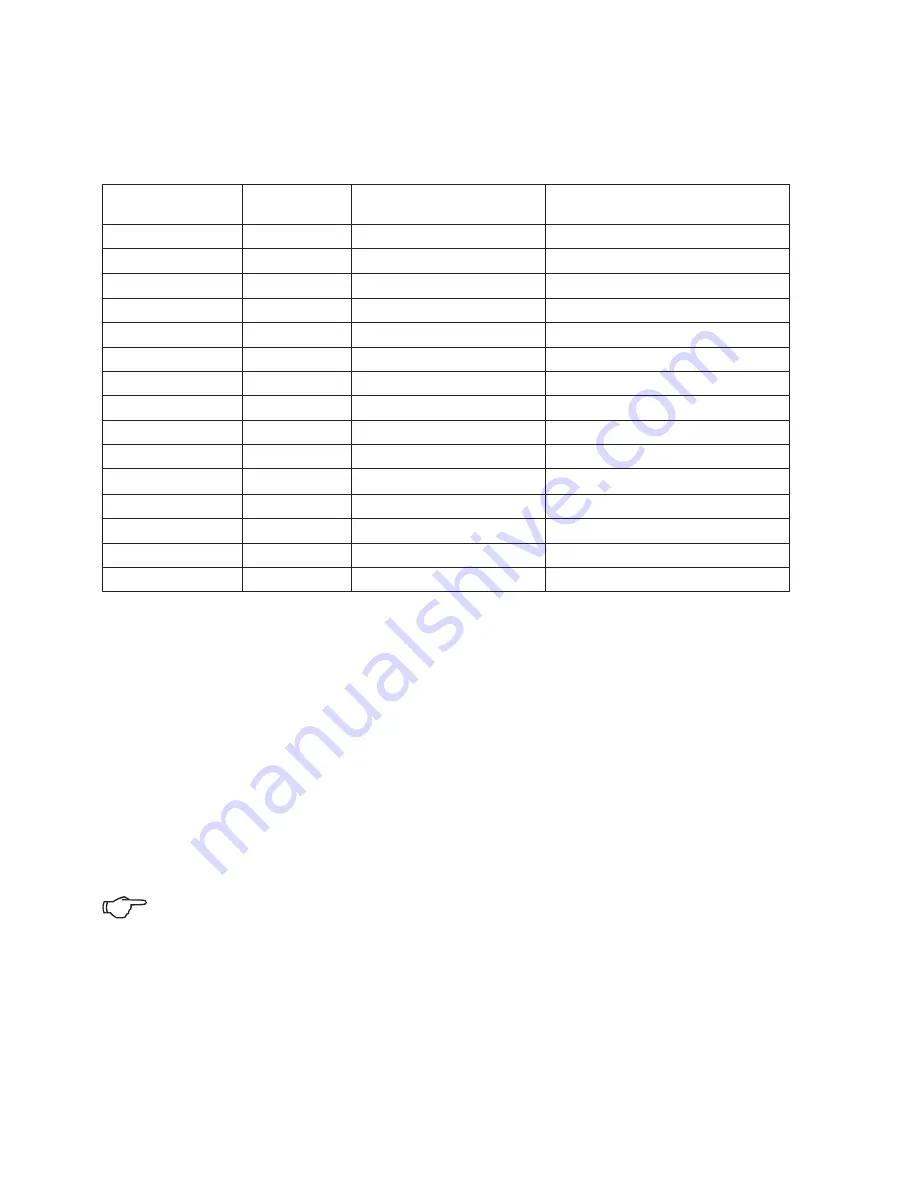
41
Page P.22
Weight/power overview
The quadrocopter can be easily flown with a 2-cell LiPo rechargeable battery with 1400 - 2000 mAh. If, however, the take-
off weight is above 900 g, a 3-cell LiPo battery should be used. The following table offers an overview of take-off weight and
power intake to select the matching battery.
Take-off weight (g)
Rechargeable
Power intake (W)
Weight-/power ratio (g/W)
Battery
800
2S
80
10
900
2S
92
9,8
1000
3S
113
8,8
1100
3S
129
8,5
1200
3S
146
8,2
1300
3S
163
8,0
1400
3S
182
7,7
1500
3S
202
7,4
1600
3S
219
7,3
1700
3S
238
7,1
1800
4S
276
6,5
1900
4S
306
6,2
2000
4S
329
6,1
2100
4S
343
6,1
2200
4S
370
6,0
The quadrocopter weight without battery is about 670 g.
Calculation of the expected flight time:
If the quadrocopter is to carry a camera at 350 g and the battery used (3S 2000 mAh) weighs 150 g, the load capacity is 500
g. The total flight weight is then at 1170 g and the power intake is approx. 141 W according to the table. The flight time can
now be calculated as follows:
Battery voltage (11.1 V) x current (2 A) x discharge time 60 (min) = 1332 (Wmin)
(1332 Wmin/141 W) x 75% (useful capacity) = 7,1 min
The expected flight duration is about 7.1 minutes.
If a second battery (3S 2000 mAh) is installed in parallel to extend the flight time, the take-off weight increases to 1320 g
and the power intake to 167 W. The new flight time is calculated as follows:
Battery voltage (11.1 V) x current (4 A) x discharge time 60 (min) = 2664 (Wmin)
(2664 Wmin/167 W) x 75% (useful capacity) = 12,0 min
The expected flight duration is about 12 minutes.
The calculations refer to regular round flight. The power emission of the speed controllers may be 3 to 4 times
higher if the maximum rising output is run. Carefully move towards the flight times that can be achieved and check
the remaining capacity of the battery after each flight to prevent deep discharge during the flight in any case. This
would damage the battery and cause a quadrocopter crash.





































